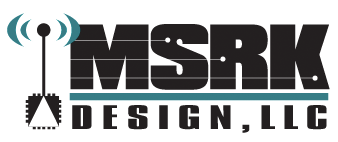The Unmanned Systems team at American Aerospace develops, improves, and operates cost-effective airborne missions using unmanned aircraft. Sometimes these tiny planes are filled with sophisticated electronics for sensing and surveillance, along with multiple radio transceivers for communicating with the ground control station. These communication systems need to work together in close proximity, and need to be configured for proper operation at each mission site.
AAAI came to us with one system that contained four different radios using different frequency bands, and asked us to optimize the performance and reduce the time needed to configure the radios at the deployment site.
Improving the Configuration Process:
Each radio system came with multiple manuals that described how to set the frequency, power levels, and other programmable features. MSRK Design reduced these manuals to a concise set of instructions that are relevant to the operators at the mission site. This enables them to quickly adjust the parameters that need to be modified, without searching through the detailed manuals for each radio.
Performance Optimization:
American Aerospace was concerned that the operation of some of the communication links were intermittent, and also that the range was insufficient for the desired flight path. We performed a functional checkout of the various systems, and discovered that some of the radios had degraded performance well below their specifications. We then worked with the radio manufacturers to repair and re-align the failing units. Next we evaluated the interaction between the various communication links, and recommended filters that were needed to reduce interference between them. Finally, we reviewed the antennas used for both the aircraft and the ground station, and recommended alternatives that would boost performance and reduce interference from other radio signals that might be operating at the mission site.
The Results:
American Aerospace was able to successfully complete the demonstration trials with their customer, and then received qualification for operational missions. MSRK Design continues to work with American Aerospace on a next-generation system with even greater complexity.
